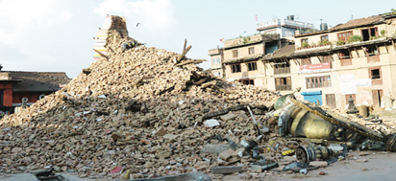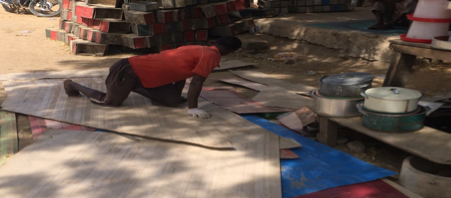Construction and demolition waste (CDW) are waste produced from building and civil engineering works, building demolition, road works and road maintenance. It is made up of several materials such as wood, concrete, excavated soil, metal, plastic, bricks, solvents, glass, gypsum, asbestos etc. CDW account for half of the solid waste generated in our environment. Extraction, processing, and disposal of these material generates large amount of reusable and recyclable waste, which when ignored, will impact the environment negatively, but when managed effectively will become a potential wealth of resources.

Construction and demolition waste (CDW) have become a threat to sustainable development and an environmental concern. There are notable adverse effect of CDW waste generation, which according to Chiverall et al, (2012), includes environmental pollution, health hazards for humans and financial burdens on companies and governments, unnecessary loss of natural resources has occurred due to lack of waste management strategies. In some countries, the concern for the effect of man’s impact on the environment as well as the rising project costs has increased the drive for the application of construction waste management. In some other countries, the embrace to proper construction waste management practices has been slow.

Though CDW has much potential, the rate of reuse and recycling is still low, especially in the developing countries. In rapidly developing countries like Nigeria where huge amounts of CDW are continuously produced and landfilled, maximum attempt should be made reuse and recycle these construction waste materials so that they are transformed to wealth to achieve economical profits. The reuse of building parts has yet some potential that has not been explored, aside from material level recycling. The reason, according to (Densley Tingley, Cooper and Cullen, 2017) includes: components information gaps, Quality of components, financial risks, scepticism about reuse, quality assurance, warranties, liabilities, etc. A bibliometric research made by (Li et al., 2018) for CDW reuse and recycling revealed that there is difference between management of CDW between developed and developing countries. These differences can be seen in its density, composition, access to collection, attitudes and awareness and economic and political framework. The developed countries have sought out ways to manage CDW while the developing countries leave it in the hands of informal waste pickers making it seem as if they are ignorant of CDW occurrence. The formal recycling sector does not carry out sorting but rather, the informal sector. The informal sector in most cities of developing countries contributes about 20% savings (or even more) to the waste management budget, meaning that 20% more waste gets recovered (Velis et al., 2012). A major opportunity can therefore be found with this. Building on these existing recycling system presents a major opportunity for sustainable waste management. Informal waste management can be integrated with the formal sector by following the system approach (where both systems interacts and depend on each other). Informal Waste pickers or scavengers are those who make a living from waste materials recovery in an informal way. It is informal because they are not recognized, they use simple or no equipment to work and are vulnerable (Gunsilius et al., 2011).

Informal actors play a great role in the success or failure of waste management in Africa, though they are ignored by the policy makers (Wilson, Velis and Cheeseman, 2006). Unlike in the developed countries where the activities and efforts of all actors of waste management are recognized (which have led to sustainable waste management), the actors in the developing countries are vulnerable. The natural resources are becoming scarce and prices of raw materials are becoming alarmingly high. The “anthropogenic resources inherent in waste becomes economically interesting” (Gunsilius et al., 2011). Therefore, to protect their interest as well as promote sustainable waste management in Africa and reduce the environmental impact and cost of waste, special initiatives is required. According to (Wilson, Velis and Cheeseman, 2006), waste management can be improved if local governments recognize the need for informal recycling. The informal recycling involves the activities of scavengers/waste pickers. There will be more positive outcomes if the government can organize them, provide financial motivations, health, and medical facilities (including PPEs). Integrating the informal sector to formal waste management will provide a great opportunity to increase recycling rate, protect the livelihood of the urban poor masses and as well address the negative aspects of current informal recycling on health and environment(Velis et al., 2012). Therefore, an in-depth study and analysis of potential utilization of waste in the Nigerian construction industry will create a strong backbone for sustainability in the construction industry and give strong support for green society. It is believed that this study would justifiably chart a new course in construction management in Nigeria. This aim of this research project is to evaluate the barriers to reuse and recycling of construction waste in Nigeria.
Contact
Email: onyekwerece@cardiff.ac.uk
